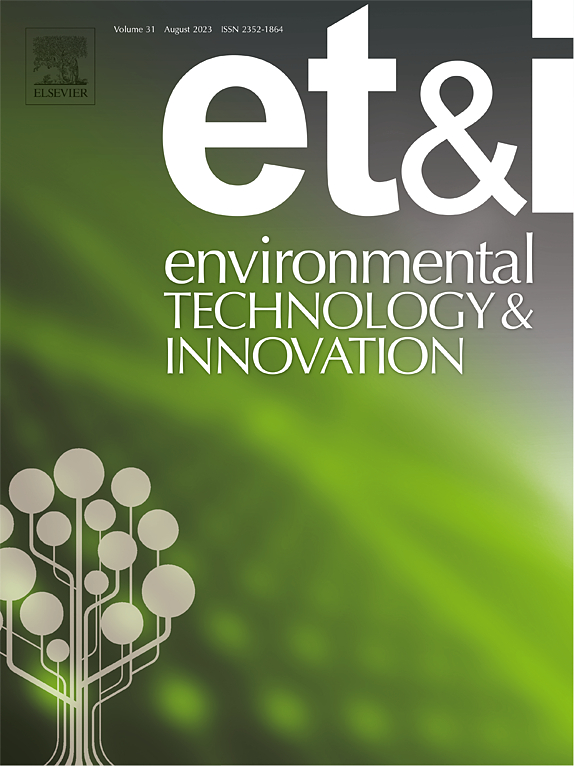Carbon sequestration in overlying methane hydrate layers via hydrate technology: Feasibility and synergistic benefits
IF 6.7
2区 环境科学与生态学
Q1 BIOTECHNOLOGY & APPLIED MICROBIOLOGY
引用次数: 0
Abstract
Excessive carbon dioxide emissions pose a global environmental issue, and carbon sequestration technology offers a solution. This study based on independently developed simulator proposes a novel approach for carbon dioxide sequestration in the overlying layers of methane hydrate reservoirs using carbon dioxide hydrate technology. The feasibility and risks of this method are evaluated over a time scale of 100,000 years. Results show that carbon dioxide migrates upwards after injection, forming highly saturated hydrate shells at the migration front. Within these carbon dioxide hydrate shells, a portion of the carbon dioxide is sequestered in liquid and dissolved forms; however, over tens of thousands of years, 20 % of the CO₂ will dissolve, while less than 1 % will escape. The study highlights the synergy between methane hydrate extraction and carbon sequestration, as the cold seawater down draw effect from extraction enhances sequestration efficiency and safety. Given the widespread distribution of methane hydrate reservoirs globally, this research provides new insights into carbon sequestration technology.
求助全文
约1分钟内获得全文
求助全文
来源期刊

Environmental Technology & Innovation
Environmental Science-General Environmental Science
CiteScore
14.00
自引率
4.20%
发文量
435
审稿时长
74 days
期刊介绍:
Environmental Technology & Innovation adopts a challenge-oriented approach to solutions by integrating natural sciences to promote a sustainable future. The journal aims to foster the creation and development of innovative products, technologies, and ideas that enhance the environment, with impacts across soil, air, water, and food in rural and urban areas.
As a platform for disseminating scientific evidence for environmental protection and sustainable development, the journal emphasizes fundamental science, methodologies, tools, techniques, and policy considerations. It emphasizes the importance of science and technology in environmental benefits, including smarter, cleaner technologies for environmental protection, more efficient resource processing methods, and the evidence supporting their effectiveness.
 求助内容:
求助内容: 应助结果提醒方式:
应助结果提醒方式:


